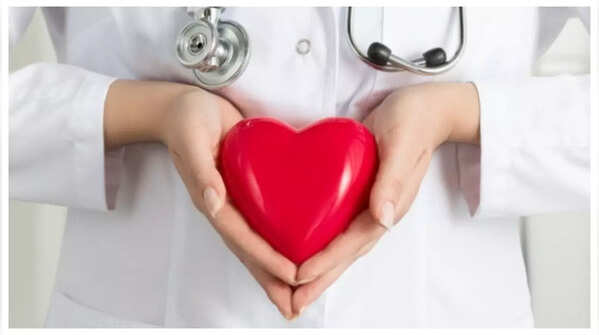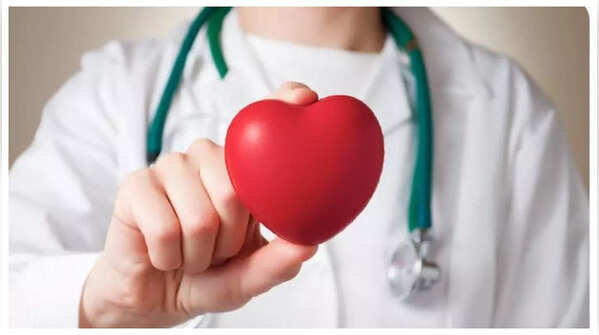The entertainment industry is mourning the sudden loss of actress and model Shefali Jariwala, famously known for her "Kaanta Laga" appearance. Reports indicate that she passed away on Friday, June 27, at the age of 42, due to cardiac arrest. She was rushed to the hospital, accompanied by her husband Parag Tyagi, but was pronounced dead upon arrival. This unfortunate event highlights the critical importance of heart health and recognizing the sudden symptoms that demand immediate medical intervention. While regular check-ups play a crucial role in preventing cardiac arrests, being aware of these five sudden symptoms can be life-saving.

One of the most prominent indicators of sudden cardiac arrest is when an individual abruptly collapses and loses consciousness. This occurs because the brain is deprived of oxygen-rich blood. The person becomes unresponsive and fails to regain consciousness even when shaken or called by name. This situation necessitates immediate transport to a medical facility, as time is of the essence.

During cardiac arrest, the heart either ceases to beat entirely or beats so irregularly that it cannot effectively circulate blood. Consequently, no pulse can be detected. The affected individual will also stop breathing or exhibit abnormal, gasping breaths referred to as agonal breathing, which is insufficient for sustaining life. Prompt medical attention is crucial to save the patient's life. If the person is not breathing or is only gasping, this is a critical sign of cardiac arrest. Agonal breathing may present as irregular, shallow, or noisy breaths, but it is not normal breathing and requires immediate intervention.

Prior to a cardiac arrest, some individuals may experience chest pain, pressure, or a general feeling of discomfort. This can be accompanied by shortness of breath, nausea, or lightheadedness. Such symptoms can indicate that the heart is under duress and could potentially precede a sudden cardiac arrest event.

Before the heart ceases its function, abnormal heart rhythms, known as arrhythmias, such as ventricular fibrillation, can trigger a rapid, fluttering, or pounding heartbeat. This irregular heartbeat disrupts the heart's capacity to pump blood effectively, potentially culminating in sudden cardiac arrest.

In certain instances, individuals might experience feelings of weakness, dizziness, or shortness of breath shortly before collapsing. These symptoms serve as warning signs that the heart is not functioning as it should and necessitate immediate medical assessment.

While both are cardiac emergencies, a heart attack and cardiac arrest differ in some key ways. A heart attack occurs when blood flow to a part of the heart muscle is blocked, usually due to a clot or narrowing in the coronary arteries. This blockage prevents oxygen-rich blood from reaching the heart tissue, causing damage or death to that part of the heart. However, during a heart attack, the heart usually continues to beat, although the person may experience chest pain, shortness of breath, nausea, or sweating. In contrast, sudden cardiac arrest is an electrical problem where the heart suddenly stops beating effectively due to an abnormal heart rhythm, causing the heart to stop pumping blood to the brain and other vital organs. This leads to immediate loss of consciousness, absence of pulse, and no breathing. Cardiac arrest can occur suddenly without warning and is often fatal within minutes, as tragically demonstrated in Shefali Jariwala's case.
Newer articles
Older articles
 Vijay Officially Named TVK's Chief Minister Hopeful for Tamil Nadu's 2026 Election
Vijay Officially Named TVK's Chief Minister Hopeful for Tamil Nadu's 2026 Election
 RJ Mahvash Prioritizes Work Over Buzz, Addresses Link-Up Speculation
RJ Mahvash Prioritizes Work Over Buzz, Addresses Link-Up Speculation
 JPG to PDF: A Comprehensive Guide for Graphic Designers & Professionals
JPG to PDF: A Comprehensive Guide for Graphic Designers & Professionals
 UNESCO's World Heritage Wonders: Unveiling 10 Iconic Sites, From Petra to the Pyramids
UNESCO's World Heritage Wonders: Unveiling 10 Iconic Sites, From Petra to the Pyramids
 iQoo Z9 Turbo: Rumored Specs Emerge – Snapdragon 8s Gen 3, 6000mAh Battery Highlighted
iQoo Z9 Turbo: Rumored Specs Emerge – Snapdragon 8s Gen 3, 6000mAh Battery Highlighted
 Shadman Islam Defends Bangladesh Batters After Day 1 Struggles Against Sri Lanka
Shadman Islam Defends Bangladesh Batters After Day 1 Struggles Against Sri Lanka
 England's Bold Claim: Could They Have Chased Down 450 Against India?
England's Bold Claim: Could They Have Chased Down 450 Against India?
 5 Often-Missed Warning Signs of Bladder Cancer You Need to Know
5 Often-Missed Warning Signs of Bladder Cancer You Need to Know
 KL Rahul Puts Country First, Prioritizes England Tests Over Newborn Child
KL Rahul Puts Country First, Prioritizes England Tests Over Newborn Child
 Tick Bite Paralyzes Fitness Influencer: A Wake-Up Call for Outdoor Enthusiasts
Tick Bite Paralyzes Fitness Influencer: A Wake-Up Call for Outdoor Enthusiasts